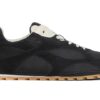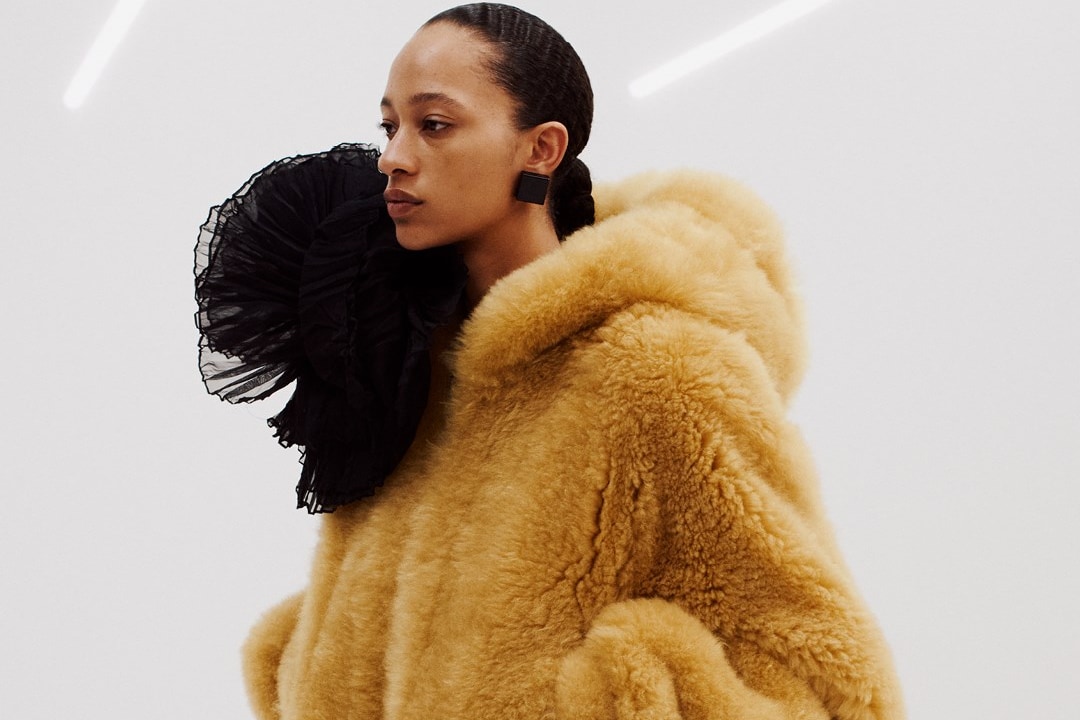
Rewrite
Lead ImagePhoebe Philo Collection DCourtesy of Phoebe Philo
What makes what Phoebe Philo does so compelling is its undeniable and oddly uncategorisable sense of on-the-money rightness. I remember going to her Céline-with-an-accent shows ten years ago and sometimes not understanding exactly why what she had pulled together resonated so much. It wasn’t that those shows had some big geopolitical echo, yet somehow the alchemy of Philo’s designs exactly approximated how women wanted to look, and maybe more importantly, to feel in their clothes. As I was told, as a man, by my female colleagues whenever I tried to criticise them. And I acquiesced – they (meaning those women, and Philo) were right, I was wrong.
Philo’s still got that inestimable ability to tap into a moment – and right now, that moment is about fashion, honestly. There’s something arch and mannered coming into clothes, a shift away from slobby ease. Couture is on people’s minds – inevitably, because of the creative upheavals at Dior and Chanel, both primarily couture houses, first with their respective creative directors’ debuts in that field due January. That’s around when these Philo clothes will first be available for sale.
Philo is probably the first, in all honesty, to go so all out on a couture feeling. She’ll probably be leading the pack. When I say couture, I definitely don’t mean ballgowns, or even especially luxurious materials. The big dress idea in Philo’s new collection is called the Big Tee Dress and it’s literally just a massive cotton T-shirt that you can wear as a tunic or stand-alone. Nothing especially couture there. But there’s a swag-back coat with a peek-over collar like something Cristóbal Balenciaga did in the 60s, and a tank-top cut wide in silk-satin like a trapeze dress. Some tops have trains sufficiently exaggerated to drag on the floor. Peplums flick out on short fluffy “teddy” shearling jackets, and a glossy plongé leather coat kicks into fullness under a tightly ribbed yoke. The silhouette is often what makes it all feel couture, which is sometimes from the styling, like when a tailored jacket with fluted, rounded-out hips is worn under a cropped bomber in more of that plongé.
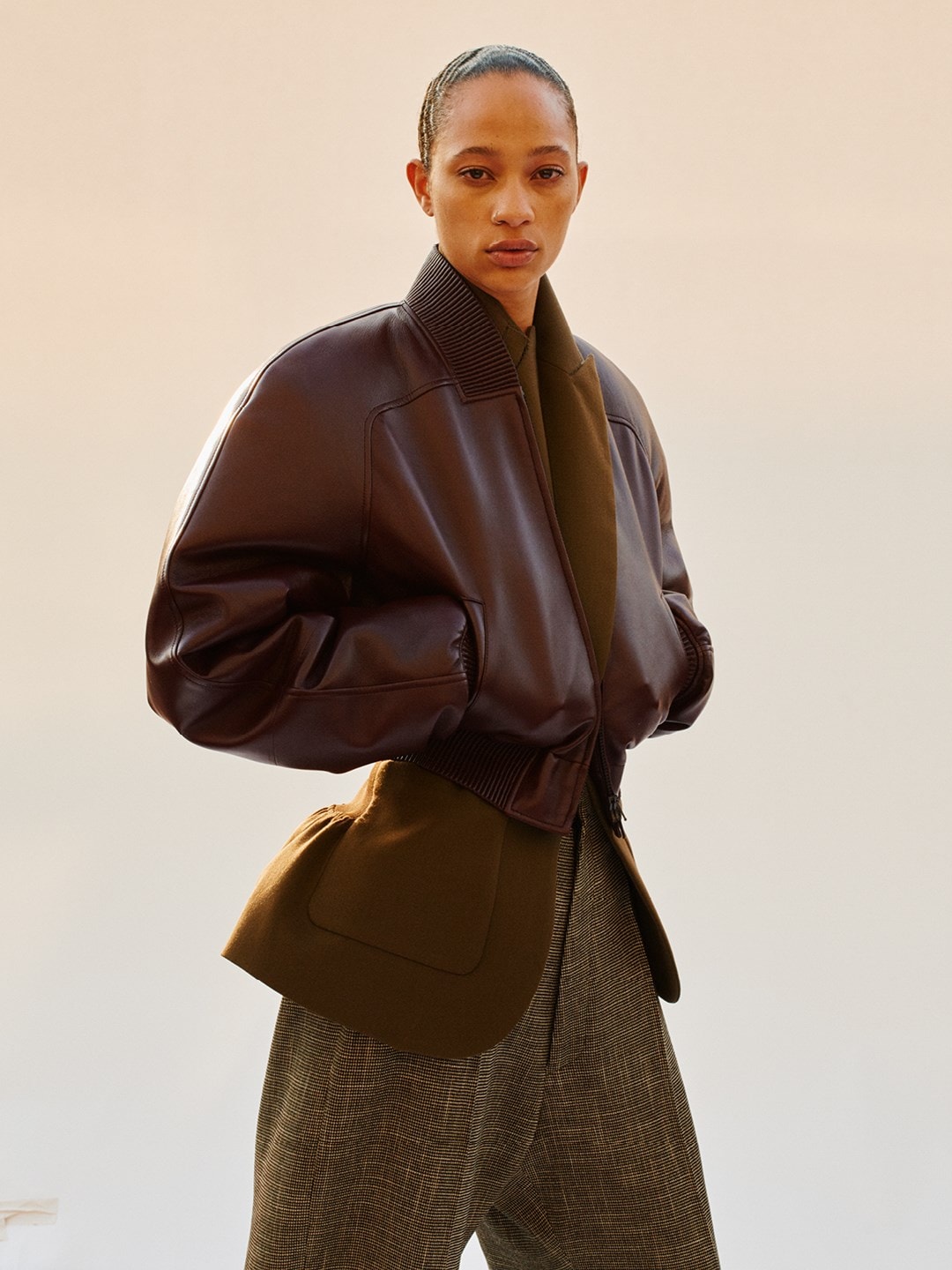
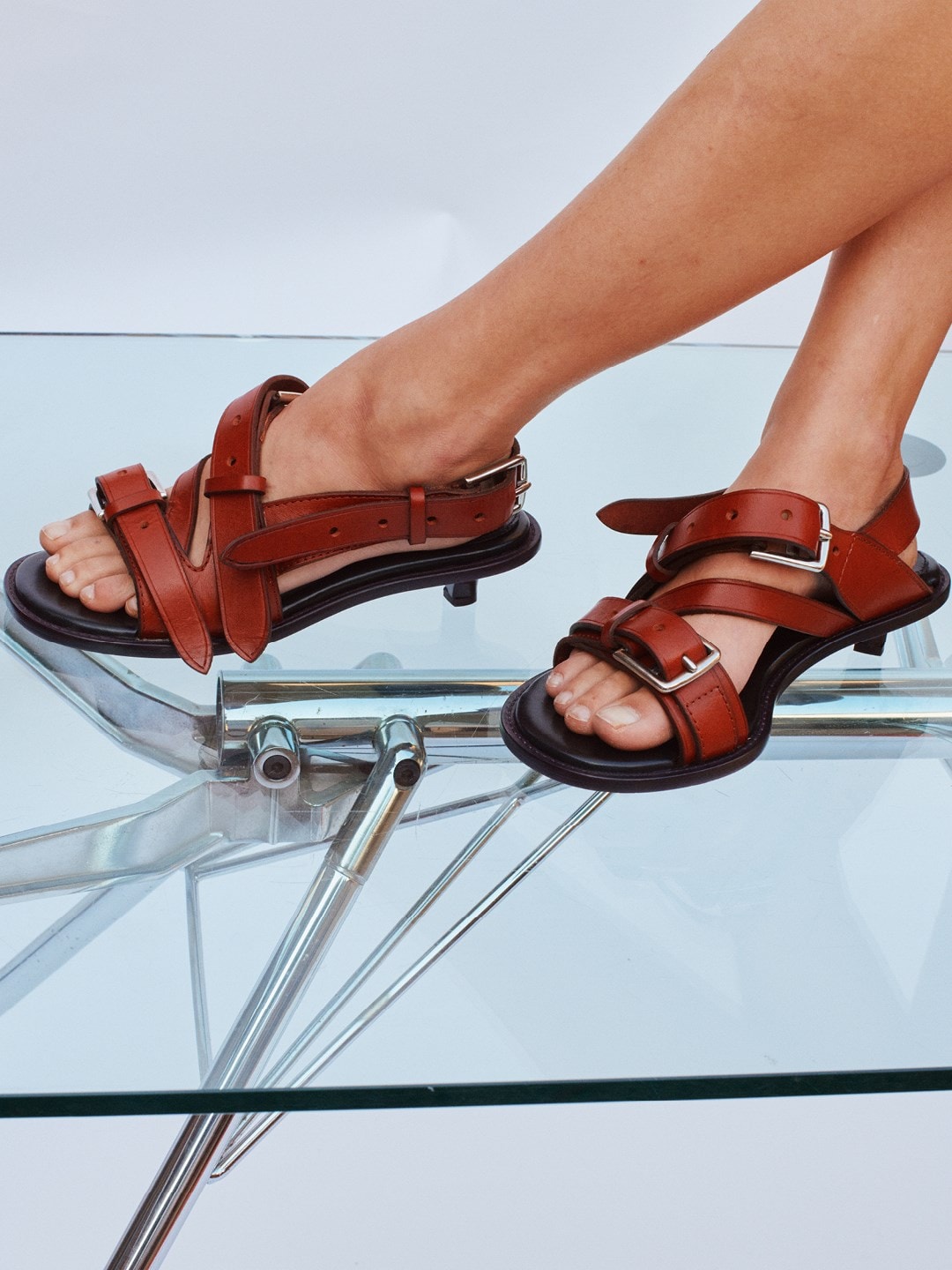
There’s actually an awful lot of leather jackets in this collection, which could be obliquely connected to the couture version Yves Saint Laurent showed scandalously in a Dior salon in 1960 and named Chicago. That’s maybe a reach, but the shawl collars Philo attached to her rounded Moon bombers also recalled rotund Saint Laurent evening jackets from the 1970s and 80s, often in shiny waxy ciré, that winds up looking like leather. And leather is expensive, after all.
And there are flouncy tops she calls Sugar, in silk-satin that’s been washed once, then stuffed with organza, garment-dyed and washed out again. There’s still a grandeur to its volume, though, but then Philo pairs them with low-slung carpenter jeans. The juxtaposition is reminiscent of the very start of her career in the 1990s, when she was designing with Stella McCartney at Chloé and translated a distinctly London look of dressy top and bashed-up jeans into a global recipe for a new wave of evening dressing. McCartney herself even wore it to the Met Gala in 1999. It started to look naff about 20 years ago, but now it looks all right again. The jeans are in cotton canvas, flecked with imperfections. They look like toiles. They also chime with the colour palette of the rest, which is intentionally indistinct – they’re named stuff like sorbet, floss, salt, chewing gum and all look as they sound.
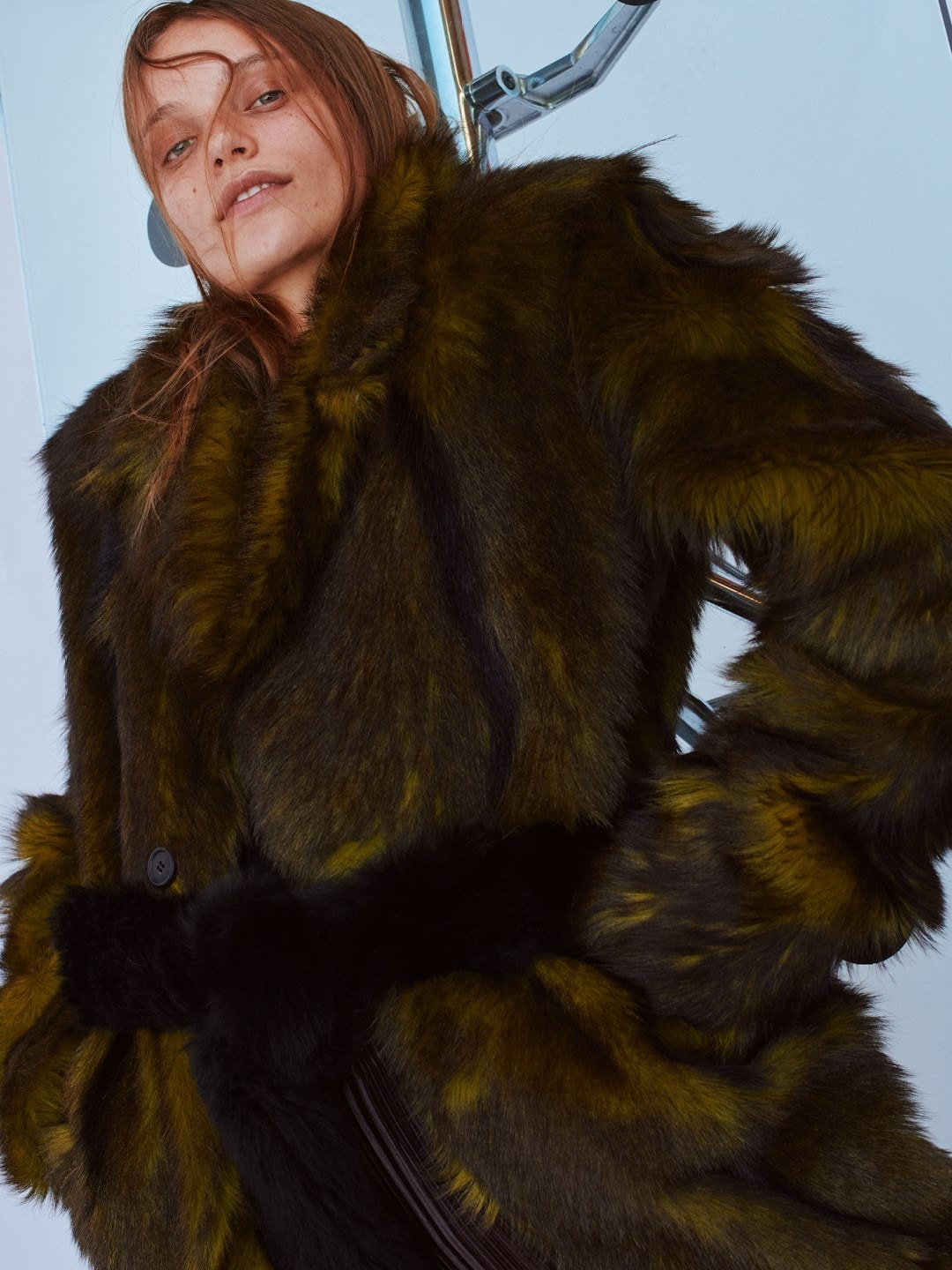
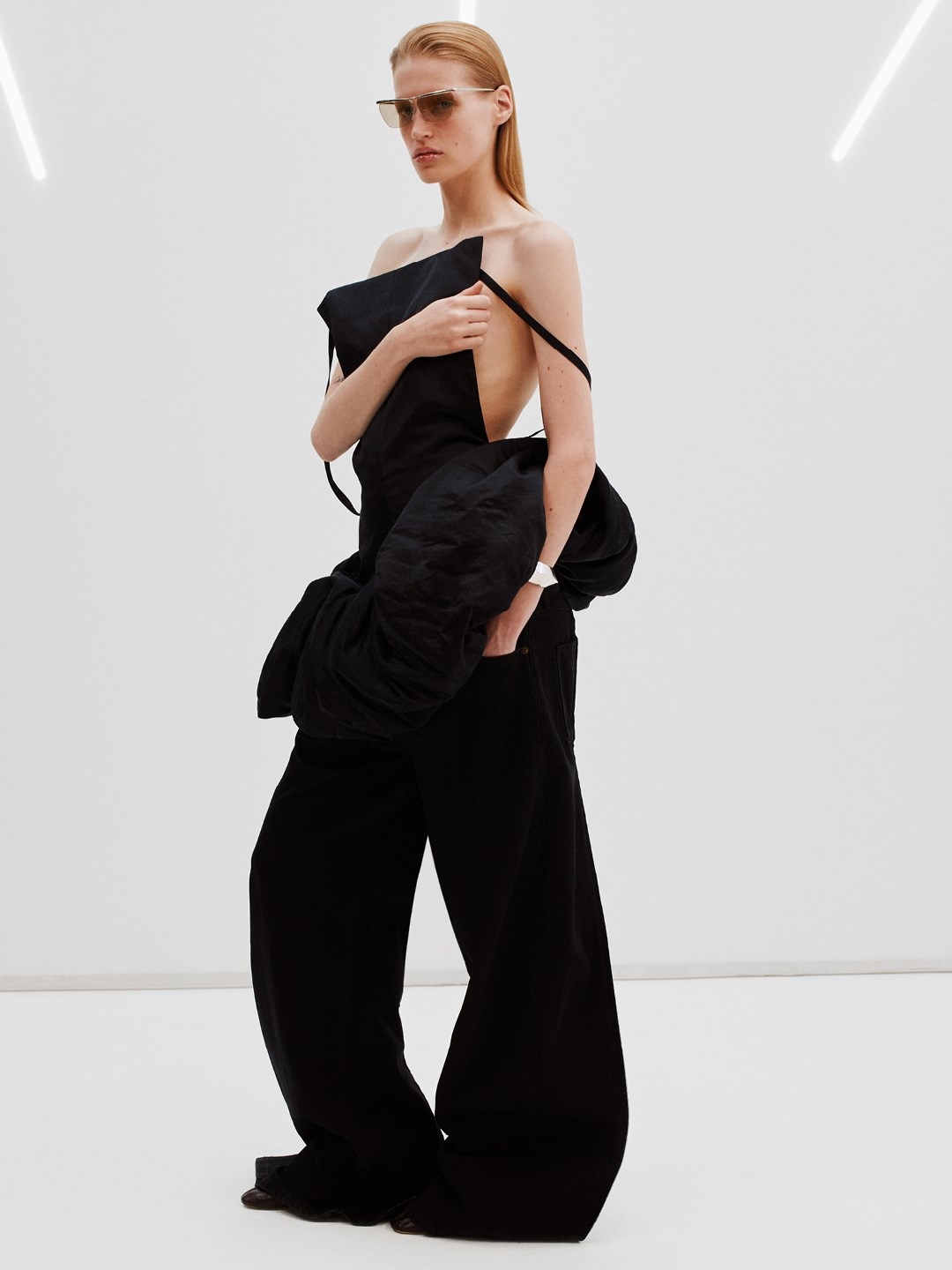
What’s interesting in Philo’s design approach – always has been – is its entirety. In the same way that people used to go into her stores and want to, say, buy the brass light fittings or the variegated marble floors, here the Philo-sophy extends across every facet. Jewellery is in brass, sometimes lacquered in black, and alternates, like the clothes, between a sharp rigidity and a sort of random, crumpled messiness. There’s a pair of shoes called Pucker (not ‘pukka’, I checked) with a gently gathered toe-box laid against a sculpted heel.
Lots here wasn’t that new. There were conscious reiterations of multiple pieces that Philo has proposed before, like that evolved bomber, those teddy shearling jackets, and even the combed embroidery that first appeared in her initial collection. It was less recycled, more rethought, and it’s something you seldom see designers afforded the time to do, in the relentless demand and churn of the new. There’s an evermore element to what she’s doing – after I prattle on about it feeling right for now, there’s a sense that these clothes will still feel right in years time.
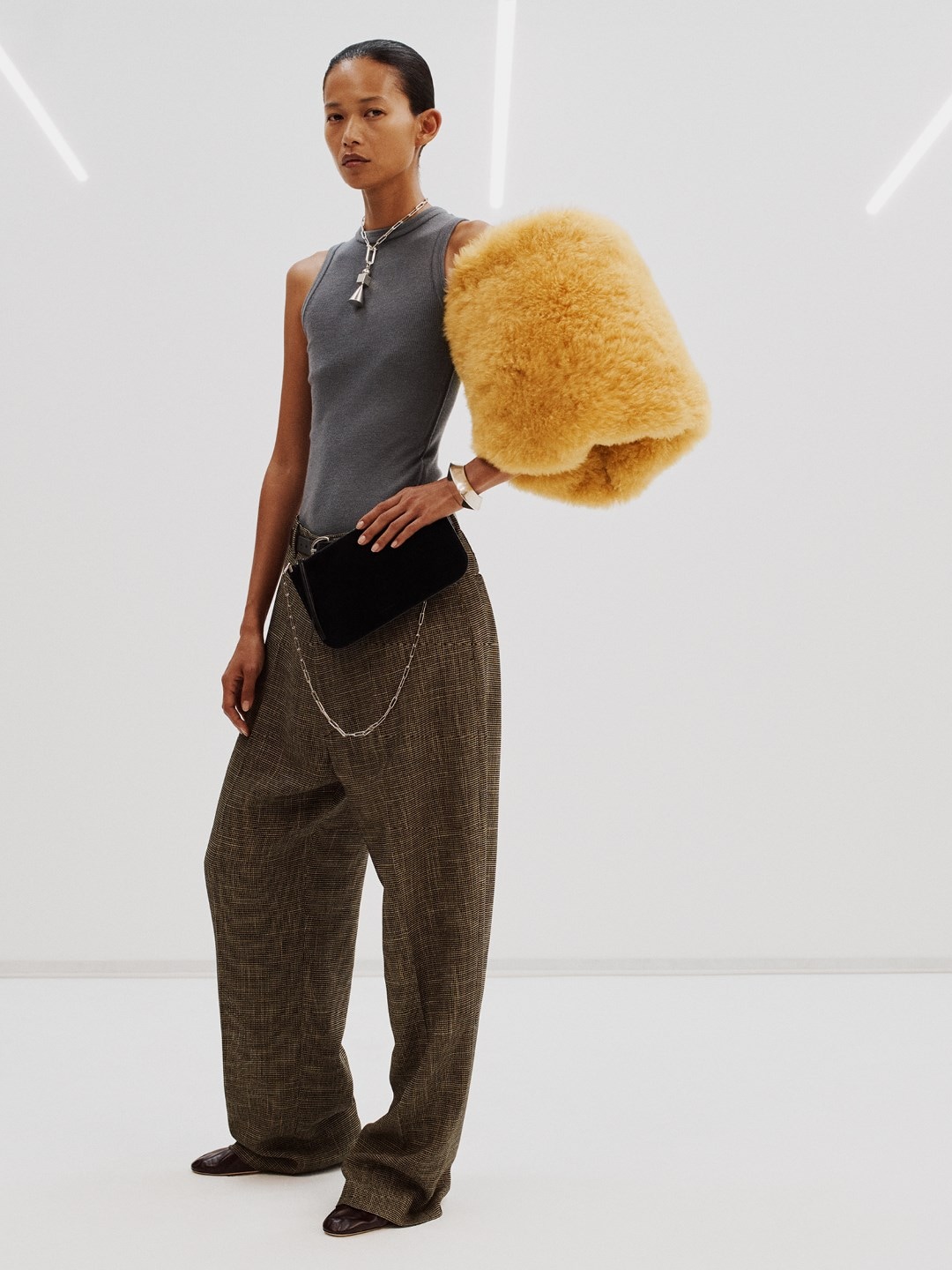
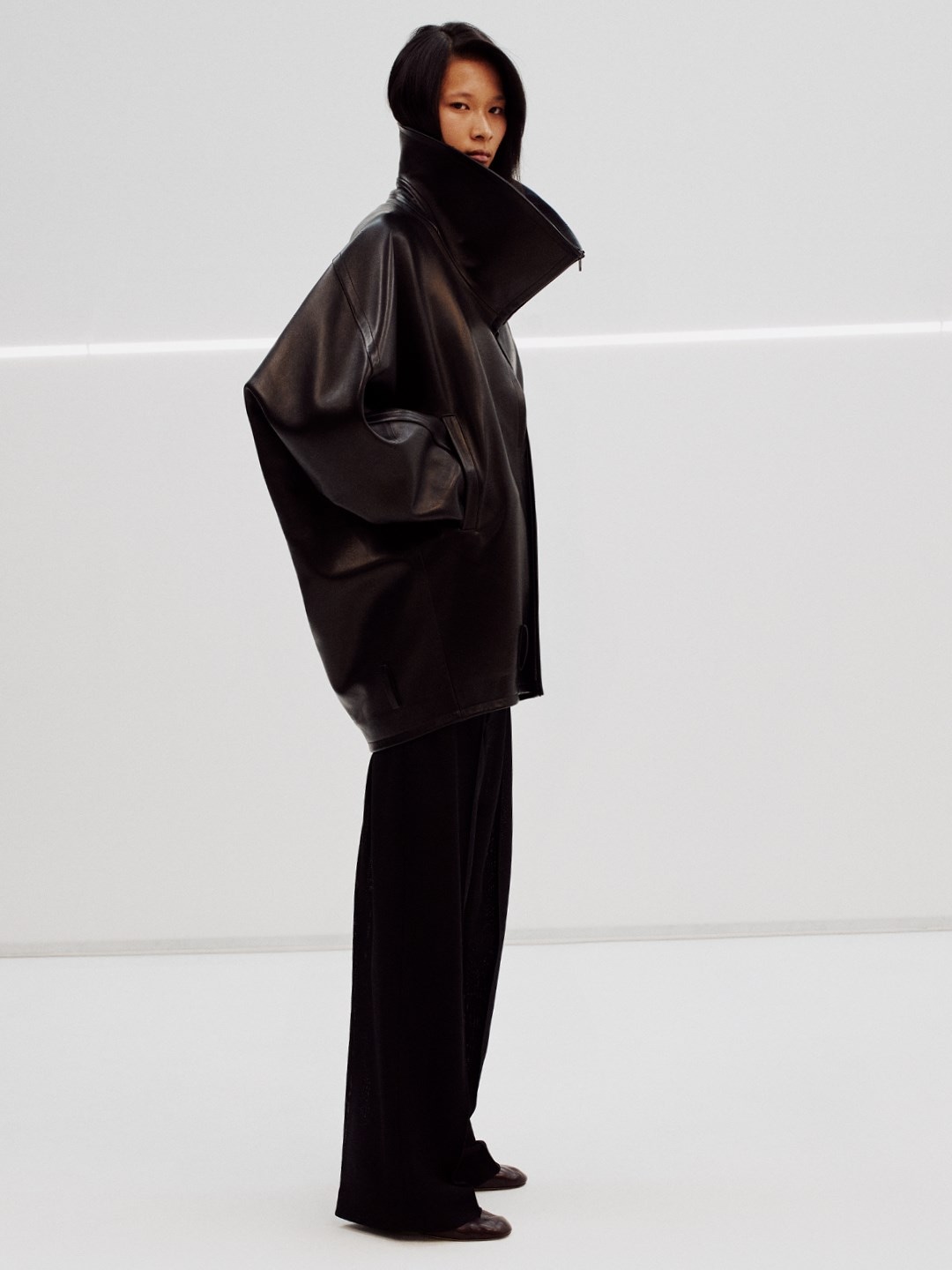
Philo, incidentally, calls this collection D. Breaking away from the convention of Spring/Summer Autumn/Winter is something plenty of designers have tried, with various degrees of confusion rather than success. And there’s a satisfying perversity here, of all that shearling and leather dropping as we’re supposedly hitting spring. Well, Philo is based in London, after all.
in HTML format, including tags, to make it appealing and easy to read for Japanese-speaking readers aged 20 to 40 interested in fashion. Organize the content with appropriate headings and subheadings (h1, h2, h3, h4, h5, h6), translating all text, including headings, into Japanese. Retain any existing
tags from
Lead ImagePhoebe Philo Collection DCourtesy of Phoebe Philo
What makes what Phoebe Philo does so compelling is its undeniable and oddly uncategorisable sense of on-the-money rightness. I remember going to her Céline-with-an-accent shows ten years ago and sometimes not understanding exactly why what she had pulled together resonated so much. It wasn’t that those shows had some big geopolitical echo, yet somehow the alchemy of Philo’s designs exactly approximated how women wanted to look, and maybe more importantly, to feel in their clothes. As I was told, as a man, by my female colleagues whenever I tried to criticise them. And I acquiesced – they (meaning those women, and Philo) were right, I was wrong.
Philo’s still got that inestimable ability to tap into a moment – and right now, that moment is about fashion, honestly. There’s something arch and mannered coming into clothes, a shift away from slobby ease. Couture is on people’s minds – inevitably, because of the creative upheavals at Dior and Chanel, both primarily couture houses, first with their respective creative directors’ debuts in that field due January. That’s around when these Philo clothes will first be available for sale.
Philo is probably the first, in all honesty, to go so all out on a couture feeling. She’ll probably be leading the pack. When I say couture, I definitely don’t mean ballgowns, or even especially luxurious materials. The big dress idea in Philo’s new collection is called the Big Tee Dress and it’s literally just a massive cotton T-shirt that you can wear as a tunic or stand-alone. Nothing especially couture there. But there’s a swag-back coat with a peek-over collar like something Cristóbal Balenciaga did in the 60s, and a tank-top cut wide in silk-satin like a trapeze dress. Some tops have trains sufficiently exaggerated to drag on the floor. Peplums flick out on short fluffy “teddy” shearling jackets, and a glossy plongé leather coat kicks into fullness under a tightly ribbed yoke. The silhouette is often what makes it all feel couture, which is sometimes from the styling, like when a tailored jacket with fluted, rounded-out hips is worn under a cropped bomber in more of that plongé.


There’s actually an awful lot of leather jackets in this collection, which could be obliquely connected to the couture version Yves Saint Laurent showed scandalously in a Dior salon in 1960 and named Chicago. That’s maybe a reach, but the shawl collars Philo attached to her rounded Moon bombers also recalled rotund Saint Laurent evening jackets from the 1970s and 80s, often in shiny waxy ciré, that winds up looking like leather. And leather is expensive, after all.
And there are flouncy tops she calls Sugar, in silk-satin that’s been washed once, then stuffed with organza, garment-dyed and washed out again. There’s still a grandeur to its volume, though, but then Philo pairs them with low-slung carpenter jeans. The juxtaposition is reminiscent of the very start of her career in the 1990s, when she was designing with Stella McCartney at Chloé and translated a distinctly London look of dressy top and bashed-up jeans into a global recipe for a new wave of evening dressing. McCartney herself even wore it to the Met Gala in 1999. It started to look naff about 20 years ago, but now it looks all right again. The jeans are in cotton canvas, flecked with imperfections. They look like toiles. They also chime with the colour palette of the rest, which is intentionally indistinct – they’re named stuff like sorbet, floss, salt, chewing gum and all look as they sound.


What’s interesting in Philo’s design approach – always has been – is its entirety. In the same way that people used to go into her stores and want to, say, buy the brass light fittings or the variegated marble floors, here the Philo-sophy extends across every facet. Jewellery is in brass, sometimes lacquered in black, and alternates, like the clothes, between a sharp rigidity and a sort of random, crumpled messiness. There’s a pair of shoes called Pucker (not ‘pukka’, I checked) with a gently gathered toe-box laid against a sculpted heel.
Lots here wasn’t that new. There were conscious reiterations of multiple pieces that Philo has proposed before, like that evolved bomber, those teddy shearling jackets, and even the combed embroidery that first appeared in her initial collection. It was less recycled, more rethought, and it’s something you seldom see designers afforded the time to do, in the relentless demand and churn of the new. There’s an evermore element to what she’s doing – after I prattle on about it feeling right for now, there’s a sense that these clothes will still feel right in years time.


Philo, incidentally, calls this collection D. Breaking away from the convention of Spring/Summer Autumn/Winter is something plenty of designers have tried, with various degrees of confusion rather than success. And there’s a satisfying perversity here, of all that shearling and leather dropping as we’re supposedly hitting spring. Well, Philo is based in London, after all.
and integrate them seamlessly into the new content without adding new tags. Ensure the new content is fashion-related, written entirely in Japanese, and approximately 1500 words. Conclude with a “結論” section and a well-formatted “よくある質問” section. Avoid including an introduction or a note explaining the process.

